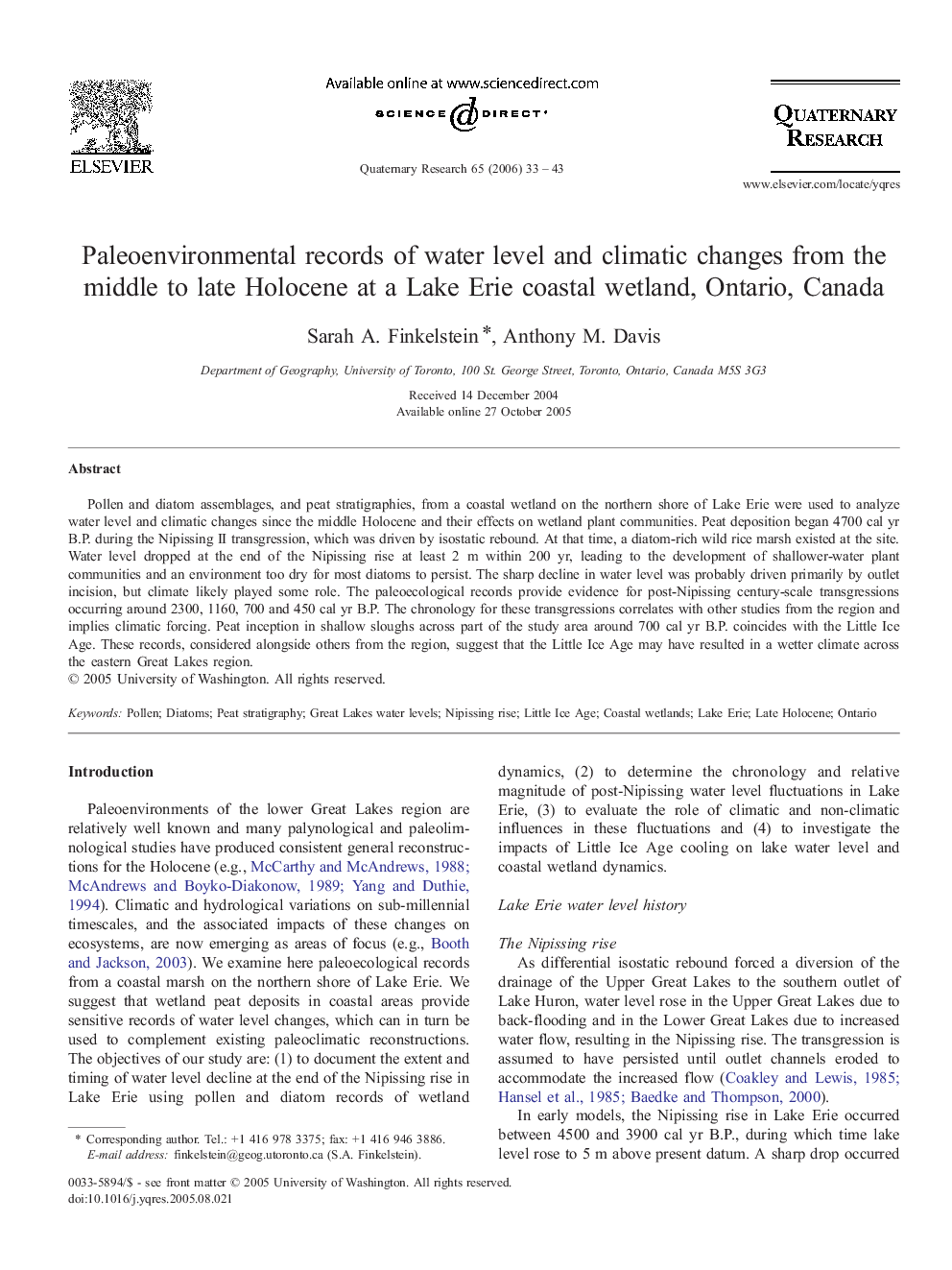| کد مقاله | کد نشریه | سال انتشار | مقاله انگلیسی | نسخه تمام متن |
|---|---|---|---|---|
| 1045756 | 944832 | 2006 | 11 صفحه PDF | دانلود رایگان |

Pollen and diatom assemblages, and peat stratigraphies, from a coastal wetland on the northern shore of Lake Erie were used to analyze water level and climatic changes since the middle Holocene and their effects on wetland plant communities. Peat deposition began 4700 cal yr B.P. during the Nipissing II transgression, which was driven by isostatic rebound. At that time, a diatom-rich wild rice marsh existed at the site. Water level dropped at the end of the Nipissing rise at least 2 m within 200 yr, leading to the development of shallower-water plant communities and an environment too dry for most diatoms to persist. The sharp decline in water level was probably driven primarily by outlet incision, but climate likely played some role. The paleoecological records provide evidence for post-Nipissing century-scale transgressions occurring around 2300, 1160, 700 and 450 cal yr B.P. The chronology for these transgressions correlates with other studies from the region and implies climatic forcing. Peat inception in shallow sloughs across part of the study area around 700 cal yr B.P. coincides with the Little Ice Age. These records, considered alongside others from the region, suggest that the Little Ice Age may have resulted in a wetter climate across the eastern Great Lakes region.
Journal: Quaternary Research - Volume 65, Issue 1, January 2006, Pages 33–43